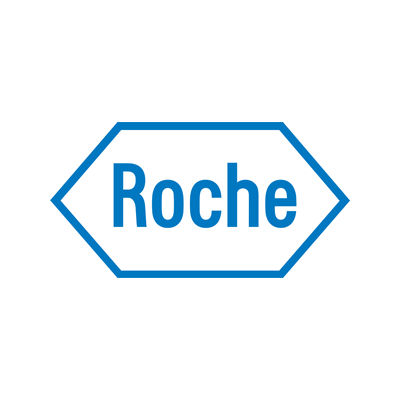Request Demo
Last update 08 May 2025
LptD
Last update 08 May 2025
Basic Info
Synonyms- |
Introduction- |
Related
4
Drugs associated with LptDTarget |
Mechanism LptD inhibitors |
Active Org. |
Originator Org. |
Active Indication |
Inactive Indication- |
Drug Highest PhasePreclinical |
First Approval Ctry. / Loc.- |
First Approval Date20 Jan 1800 |
Target |
Mechanism LptD inhibitors |
Active Org. |
Originator Org. |
Active Indication |
Inactive Indication- |
Drug Highest PhasePreclinical |
First Approval Ctry. / Loc.- |
First Approval Date20 Jan 1800 |
Target |
Mechanism LptD inhibitors |
Active Org. |
Originator Org. |
Active Indication |
Inactive Indication- |
Drug Highest PhasePreclinical |
First Approval Ctry. / Loc.- |
First Approval Date20 Jan 1800 |
100 Clinical Results associated with LptD
Login to view more data
100 Translational Medicine associated with LptD
Login to view more data
0 Patents (Medical) associated with LptD
Login to view more data
127
Literatures (Medical) associated with LptD01 Apr 2025·Microbiological Research
De novo evolution of antibiotic resistance to Oct-TriA1
Article
Author: Kharitonov, Katya ; Findlay, Brandon L ; Mercado, Laura Domínguez ; Chowdhury, Farhan R
01 Apr 2025·Cell Reports
Optimal functioning of the Lpt bridge depends on a ternary complex between the lipocalin YedD and the LptDE translocon
Article
Author: Collet, Jean-François ; Nguyen, Van Son ; Vertommen, Didier ; Iorga, Bogdan Iuliu ; Csoma, Naemi ; Gennaris, Alexandra ; Remaut, Han ; Thouvenel, Laurie
11 Mar 2025·Proceedings of the National Academy of Sciences
Immobile lipopolysaccharides and outer membrane proteins differentially segregate in growing
Escherichia coli
Article
Author: Kaminska, Renata ; Mamou, Gideon ; Uphoff, Stephan ; Ward, Scott ; Kumar, Sandip ; Kleanthous, Colin ; Lagage, Valentine ; Cohen, Edward A. K. ; Wang, Jingyu ; Booth, Martin J. ; Inns, Patrick G.
1
News (Medical) associated with LptD30 Apr 2024
Pictured: Novartis' logo outside its building in San Diego, California/iStock, JHVEPhoto
Novartis on Tuesday expanded its peptide discovery collaboration with Japanese biotech PeptiDream in a deal worth more than $2.7 billion in milestone payments, making it the latest move in the red hot radiopharma sector.
Under the agreement, PeptiDream use its technology–the Peptide Discovery Platform System—to find new macrocyclic peptides against targets that Novartis has selected. These targets can be conjugated into radioligand therapies (RLTs), which may have other therapeutic or diagnostic uses.
Novartis is paying PeptiDream $180 million upfront and is also eligible to receive $2.71 billion in milestone payments. The biotech may also net tiered royalties on any product sales.
PeptiDream’s stock price jumped 24% on the news in Tuesday trading.
Novartis and PeptiDream have been working together on various deals since 2010. In 2019, the two companies agreed to find new peptide-drug conjugates. The terms of that partnership were not disclosed.
“We are delighted to further expand our long-standing macrocyclic peptide discovery collaboration with Novartis, adding additional peptide RLT and other programs to our strong partnership,” PeptiDream CEO Patrick Reid said in a statement. “As macrocyclic peptides continue to be the ideal vectors for the targeted deliver of a variety of therapeutic payloads, PeptiDream continues to build an extensive pipeline of partnered as well as internal peptide-conjugate programs.”
PeptiDream has also been active in the deal space as the biotech received $40 million upfront from Roche’s Genentech last year to discover radioisotope drug conjugates. The agreement is also worth up to $1 billion in milestones. The biotech has also previously initiated discovery deals with Eli Lilly and Merck, among others.
“Our expanded partnership reflects our shared commitment to pioneering science that broadens the scope of transformative therapeutic approaches such as RLT,” Shiva Malek, global head of oncology research at Novartis, said in a statement.
Radiopharmaceuticals have been a big investment area for Novartis. In 2018, the pharma spent over $6 billion to acquire two companies, Advanced Accelerator Application S.A. and Endocyte. Out of those deals, Novartis gained access to the prostate cancer treatment Pluvicto and Lutathera. These radioligands have been good earners for Novartis, as Pluvicto raked in $310 million in the first quarter of 2024 while Lutathera brought in $169 million.
The radiopharma deal space has been active in the past year as AstraZeneca inked a potential $2.4 billion deal in March 2024 to acquire Fusion Pharmaceuticals, gaining access to its radio-conjugate candidate FPI-2265, a treatment for prostate cancer. Last year, Bristol Myers Squibb spent $4.1 billion to purchase RayzeBio, securing access to its lead radiopharma program.
Tyler Patchen is a staff writer at BioSpace. You can reach him at tyler.patchen@biospace.com. Follow him on LinkedIn.
AcquisitionLicense out/in
Analysis
Perform a panoramic analysis of this field.
login
or

AI Agents Built for Biopharma Breakthroughs
Accelerate discovery. Empower decisions. Transform outcomes.
Get started for free today!
Accelerate Strategic R&D decision making with Synapse, PatSnap’s AI-powered Connected Innovation Intelligence Platform Built for Life Sciences Professionals.
Start your data trial now!
Synapse data is also accessible to external entities via APIs or data packages. Empower better decisions with the latest in pharmaceutical intelligence.
Bio
Bio Sequences Search & Analysis
Sign up for free
Chemical
Chemical Structures Search & Analysis
Sign up for free
